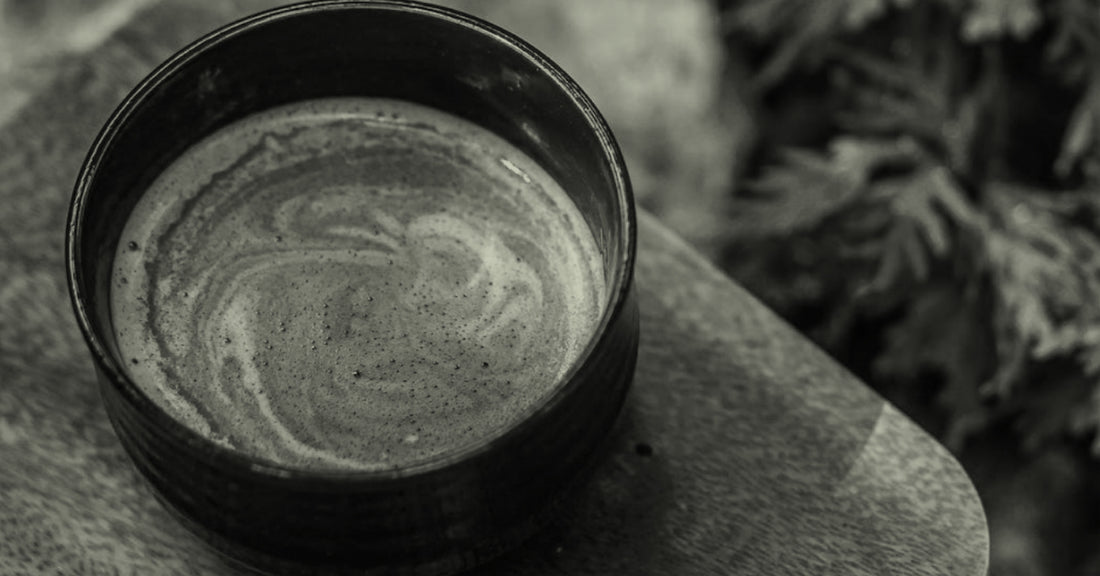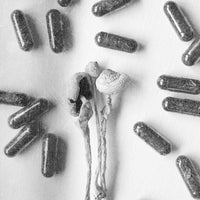Maybe your inner Sam-I-Am has been pestering you to try that curious green beverage you keep seeing at the café—or perhaps you did take a chance on a matcha latte, only to find that it tasted like a Christmas cookie dipped in bitter algae.
If you’re in the latter category, you’re just going to have to take our word for it: That’s not the true matcha experience. Real, high-grade matcha is a whole other deal. Allow us to explain.
Matcha is a fine powder that is made by stone-grinding a special kind of green tea leaf. (Note: This article breaks down the ancient, legendary history behind this process.) Thus, if you’ve had green tea, you have a rough idea of what matcha tastes like. However, matcha’s gyokuro leaves have been grown under a canopy that blocks direct sunlight. This process, known as Tana in Japan, imbues the tea with a rich flavor called umami. Translating to “essence of deliciousness,” umami refers to one of the five basic flavors—along with sweet, sour, salty and bitter.
In scientific terms, when you’re tasting umami, you’re tasting the amino acid known as monosodium glutamate. Think of the meaty, savory taste common to foods like steak, salmon, mushrooms and aged cheese, and you might start to get the idea.
When we put Sean Matteson, the CBDO of MUD\WTR’s matcha supplier, Matcha.com, on the spot for a description of matcha’s flavor, he rose to the challenge. In his words, matcha is “savory, slightly grassy, with an umami flavor and then some aromas ranging from nutty or creamy, to marine-like—almost like some notes that you’d get in seaweed.”
Accurate as that description might be, it might not align with your experience if you’ve only had matcha in a latte from a café—much the less if you’ve only tried a lower-grade matcha, which can be downright bitter.
Nick Noble, Matcha.com’s COO, says he frequently speaks with people who didn’t like matcha the first time and are on the fence about trying it again.
“The answer is really, ‘Well, if you didn't like it, I’m 99 percent sure you didn't have the good stuff,’” he says. “People who have tried maybe not the best matcha might think it's bitter, but the real-deal, high-quality ceremonial matcha is not bitter.”
To elaborate on that a little, matcha strains tend to fall into three general categories. One of these is culinary-grade, often used in baked desserts, and more occasionally in sweetened drinks. Then there’s mid-grade or premium matcha, whose umami flavor and ease of blending make it well suited for lattes and other drinks served in coffeehouses and teahouses. At the top of the heap is the ceremonial-grade stuff, which is deemed worthy of use in Japanese tea rituals.
The grade of the matcha depends largely on where the leaves are picked from on the tea bush. The younger, softer leaves at the top of the plant are used for the higher grades, which are known for their smooth flavor and fine texture. The older, lower leaves tend to be grainier and more bitter.
According to Noble, what really distinguishes a true ceremonial-grade matcha is that it is produced from first-harvest tea leaves.
“There are different points in the season when harvests can take place,” he explains. “The first harvest is where the leaves are youngest and haven't been beaten by the sun too much, so they're not bitter. When the tea plant is exposed to sunlight, it produces antioxidants to protect itself.”
This, he says, is a big part of what makes some matcha strains bitter.
“In the first harvest, only the top few leaves with the best flavor and potency are picked.”
Adequate shielding from the harsh sunlight boosts the theanine content in the leaves, making for the famous umami flavor found in high-quality matcha. It also stimulates the overproduction of chlorophyll, which is what gives matcha its bright green color.
Noble says he and his associates at Matcha.com have heard the term “ceremonial-grade” being used a bit loosely over the years.
“We feel pretty strongly—when we say it, we mean it in the traditional sense,” he says. “Ceremonial-grade really has all the best things about matcha: really bright, mind-bogglingly green color, that real umami, complex taste. Bitterness is definitely not the first thing that you taste.”
To that, Matteson adds:
In high-grade matcha, “... the bitterness will be very subtle, and the mouth feel will be smooth, with subtle layers that unfold with the sweet umami aftertaste that lingers for literally 30 seconds after you take a sip. With poor-quality matcha or with lower grades, you would have to dilute it with more water and drink it Usucha (thin), or you mix it with nut milks or sweeteners. With the really high-quality grades of matcha, I would say it's almost sacrilegious to veil the flavor. I would only drink it thick, which they call Koicha in Japan, with very little water and undiluted.”
If you’re going to drink matcha, choose wisely. And, to paraphrase Sam-I-Am, “You do not like it, so you say? Try the good stuff, and you may.”
Damon Orion is a writer, musician, artist, and teacher based in Santa Cruz, Calif. He has written for Revolver, Guitar World, Spirituality & Health, Classic Rock, High Times and other publications. Read more of his work at damonorion.com.
Read More: The Legendary History of Matcha
Read More: How to Make a Mud Matcha Latte




